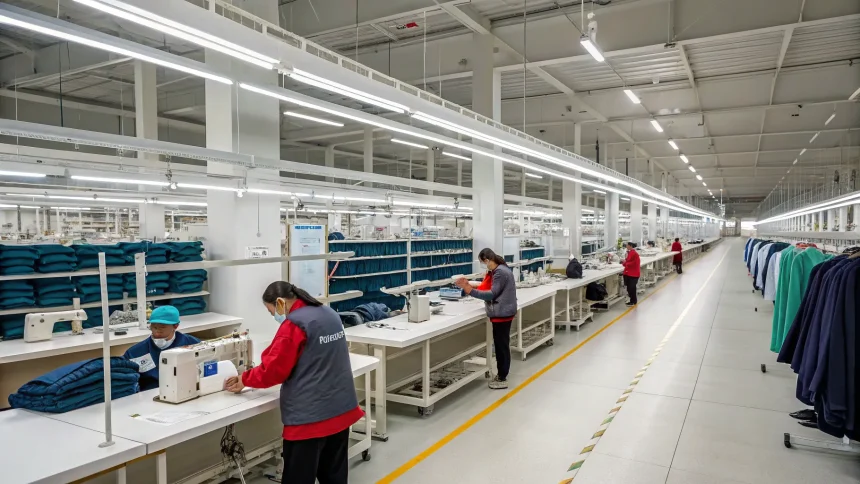The ongoing trade war has brought renewed attention to American manufacturing, particularly in the clothing industry where more than 97 percent of garments sold in the United States are produced overseas. This stark statistic highlights the massive shift in production that has occurred over decades as companies sought cheaper labor costs abroad.
As tensions between the U.S. and its trading partners continue to escalate, many consumers and businesses are reconsidering domestic production. However, bringing clothing manufacturing back to American soil presents significant economic hurdles and practical challenges.
The Current State of American Apparel Manufacturing
The dominance of overseas production in the American clothing market represents a dramatic transformation of the industry. With less than 3 percent of clothing sold in the U.S. actually made domestically, American apparel manufacturing has become a shadow of its former self.
This shift occurred primarily due to labor costs. Garment production is labor-intensive, and manufacturers can pay workers in countries like Bangladesh, Vietnam, and China a fraction of what American workers would earn for the same work.
NBC’s Vicky Nguyen, reporting for TODAY, examined this issue in depth, looking at both the economic factors and the practical realities of attempting to reverse this trend.
Trade War Impacts and Consumer Attitudes
The current trade war has created both opportunities and complications for domestic manufacturers. Tariffs on imported goods have made some foreign-made products more expensive, potentially giving American-made alternatives a chance to compete on price.
Many consumers have expressed increased interest in buying American-made products, driven by a combination of patriotism, concerns about job creation, and reactions to the trade tensions. This “buy American” sentiment has gained momentum as trade disputes have intensified.
However, consumer interest doesn’t always translate to purchasing behavior when confronted with price differences. American-made clothing typically costs significantly more than imported alternatives, creating a substantial barrier for widespread adoption.
The Cost Equation of Domestic Production
The primary obstacle to expanding American clothing manufacturing is the cost differential. Producing garments in the United States can increase manufacturing costs by 20 to 40 percent or more, depending on the type of clothing and production methods.
These higher costs stem from several factors:
- Labor wages that are many times higher than in developing countries
- Stricter regulatory compliance requirements
- Higher facility and operational costs
- Smaller-scale production capabilities
For companies considering domestic production, these cost increases must be either absorbed into profit margins or passed on to consumers, neither of which is an easy solution in a highly competitive retail environment.
Infrastructure and Skill Challenges
Beyond pure economics, the U.S. faces infrastructure challenges in rebuilding its apparel manufacturing capacity. Decades of offshoring have resulted in:
A significant reduction in specialized equipment and facilities designed for clothing production. The loss of skilled workers familiar with textile and garment manufacturing techniques. Disrupted supply chains for materials and components used in clothing production.
Rebuilding this infrastructure would require substantial investment and time, creating additional barriers to rapid expansion of domestic production capabilities.
The Future of American-Made Clothing
Despite these challenges, some American clothing manufacturers have found success by focusing on specific market segments. High-end fashion, specialized workwear, and products marketed specifically on their American-made status have carved out niches in the market.
Some companies have also explored automation and advanced manufacturing techniques to reduce the labor cost differential, though clothing production remains difficult to fully automate compared to other industries.
The trade war may accelerate some of these trends, potentially creating more opportunities for domestic manufacturers who can adapt to the changing economic landscape.
As consumers weigh their options between imported and domestically-produced clothing, they face a complex calculation involving price, quality, ethics, and personal values. While “buy American” may be increasingly discussed, the practical and economic realities ensure that overseas production will likely continue to dominate the American clothing market for the foreseeable future.









